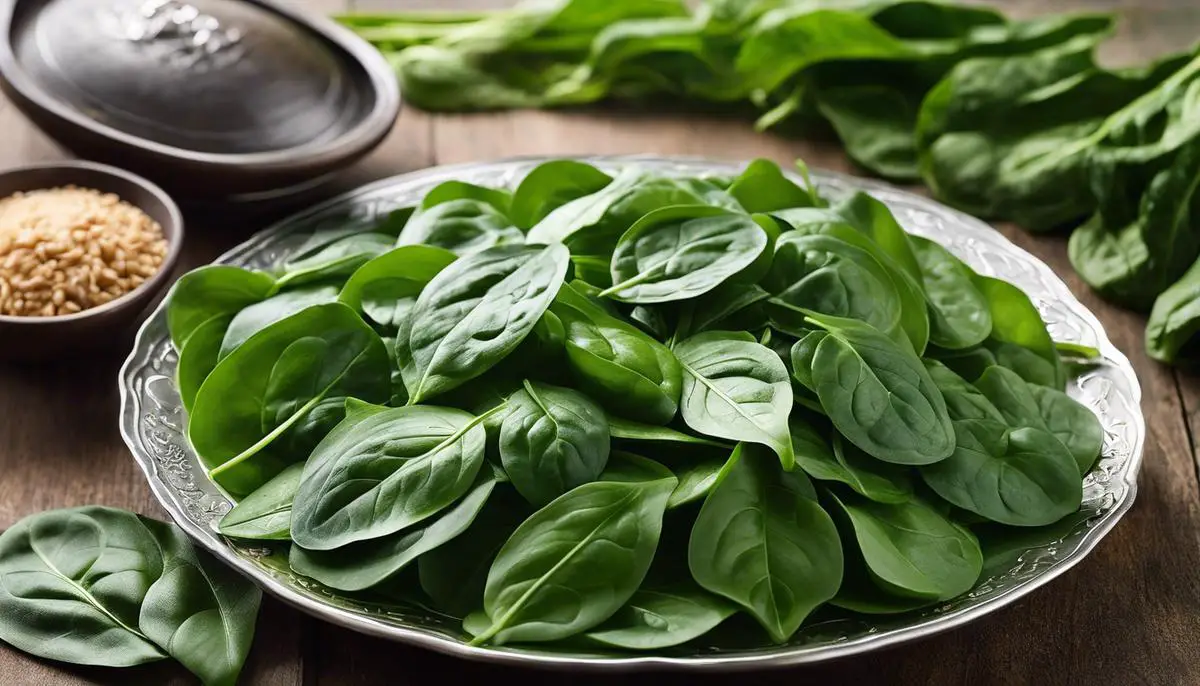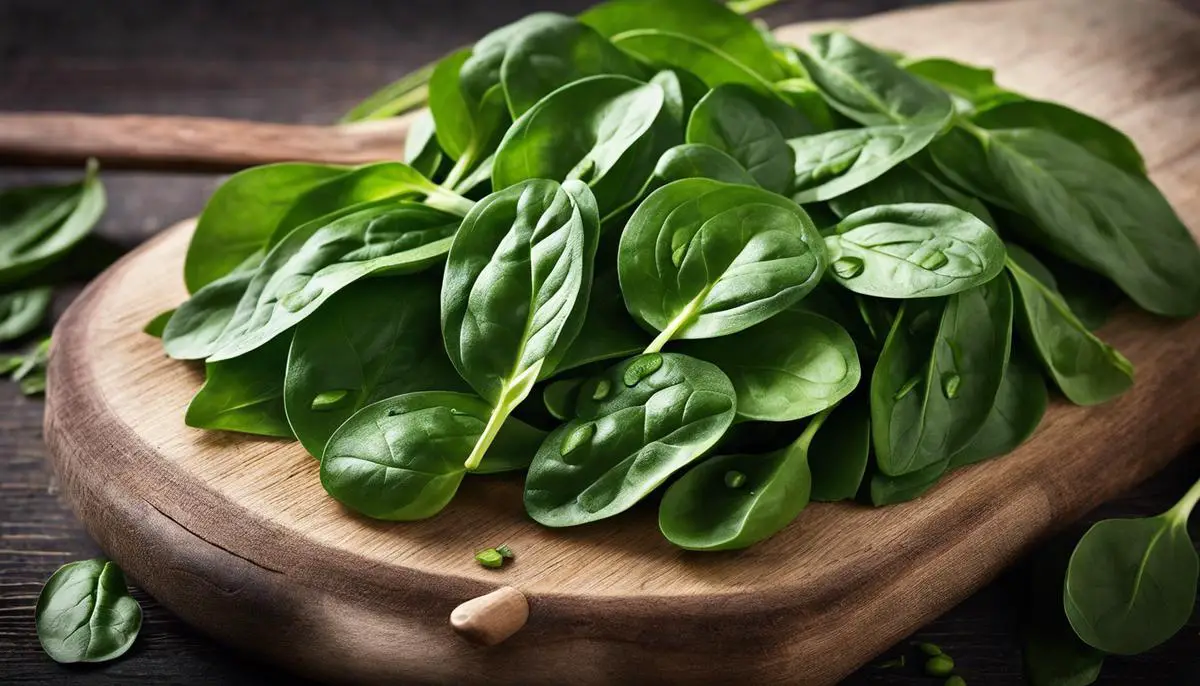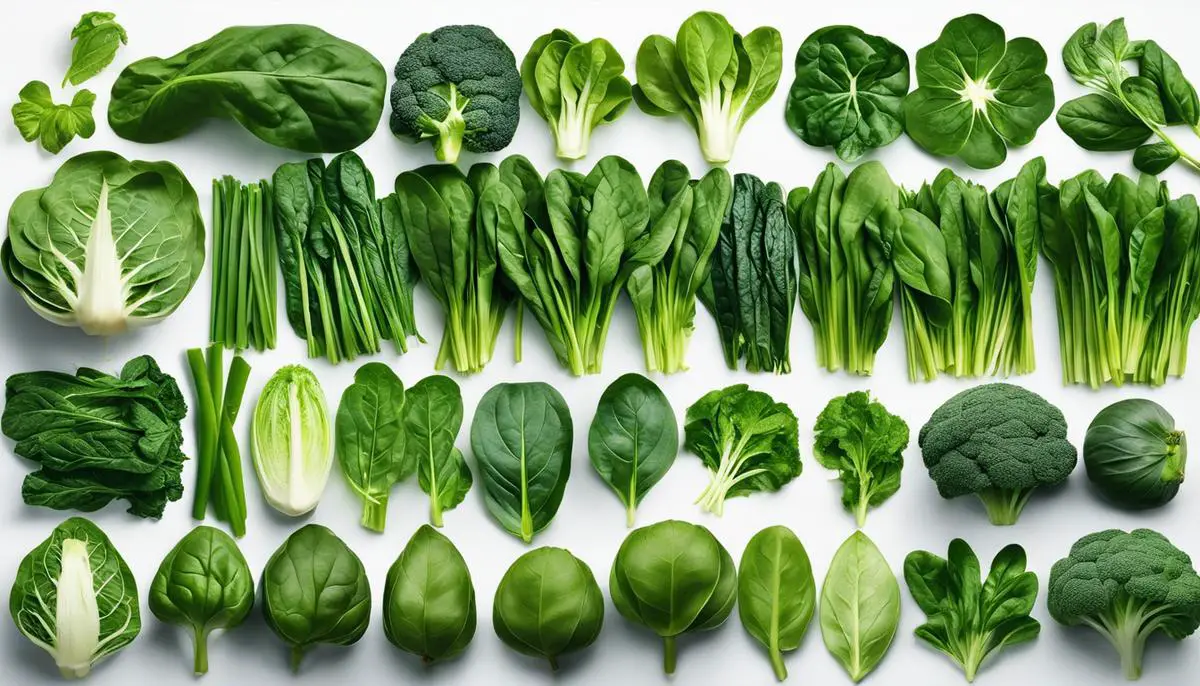Known for its high nutrition and vivid green charm, spinach, originating from the ancient Persian empire to a globally appreciated leafy green, has been nourishing civilizations for centuries. Symbolizing vitality and resurgence, it has won over the hearts of millions, gracing everyday salads while being the centerpiece in gourmet dishes and enhancing flavors with its unique blend of nutrients. From its historical past to its diverse adaptations by cultures around the globe, this journey of exploration unveils the richness and versatility of various spinach types, making us appreciate this leafy knight in emerald armor even more.
The Origins and Global Varieties of Spinach
The Fascinating Origin of the World’s Spinach Varieties
There’s a distinct joy that creeps in as we step into the kitchen, ready to embark on yet another culinary adventure. The beauty of flavor and the power to create magical plates with simple, everyday ingredients is what makes cooking so enchantingly wondrous. Among these ingredients, one green leafy star that holds a particular allure is spinach, a superfood par excellence. With its beautiful leafy texture and versatile flavor profile, spinach can adapt to any recipe, any kitchen, anywhere in the world, making it irresistible to culinary enthusiasts. But where does this glorious green come from?
Reader Poll: What online courses would interest you?
Turn back the gastronomic clock to ancient Persia (modern-day Iran), where we find the humble beginnings of spinach. Cultivated in the rich soils around the Persian Gulf and the Caspian sea since 2000 BC, spinach was destined for culinary greatness from a very early age. This green darling captured the attention of traders and travelers, who helped it leap across continents and seas, stamping its footprints into the ever-evolving food culture of various regions.
As the centuries marched on, spinach reached China. This adventure took place in the 7th century and as the story goes, it was due to the kindness of a merciful king to Nepal. This tale of spinach, from Persia to the orient, is where it gets its Chinese name, “bo cai”, or, roughly translated, “the Persian green.”
A few centuries more passed by before the Arab invasion of Sicily introduced spinach to the Mediterranean. The Arab farmers found European climates very spinach-friendly and thus, Mediterranean recipes started experiencing the exciting novelty of this nutrient-rich leaf. Italy took a keen interest in this new vegetable, conveniently placed on the western travel route of spinach.
Subscribe to our newsletter!
The rest of Europe was not far behind. By the late 12th century, spinach had reached Spain, brought by the Moors. Meanwhile, England met spinach much later, around the 14th century where it quickly earned the nickname “the Spanish vegetable.”
In America, these delightful greens seem to have made their appearance in the early 19th century – and there’s been no stopping spinach since!
This fascinating world of spinach, rooted in ancient Persia, branching out to Asia, Europe, and the Americas, is a testament to the remarkable ability of food to connect ideas, people, and cultures. Our plate of sautéed spinach or creamy spinach soup is not just a simple meal; it is a remarkable journey through history and geography. As we twirl those leafy greens onto our forks, let us take a moment to appreciate the rich heritage of these plates we are enjoying. From sharing meals together to exchanging ingredients, food truly is a language that binds us all together. In every bite of spinach, savor not just the leaf, but the world of culinary stories it carries with it.

Nutritional Value and Health Benefits of Spinach
Unlocking the Power of Spinach: A Journey from Persia to Your Plate
Gazing at a plate filled with vibrant spinach, it feels surreal to think about the monumental gastronomic journey this humble green leaf has travelled from ancient Persia to be crowned a beloved ‘superfood‘ today. The term superfood is not an idly coined expression, rather it signifies food and ingredients laden with abundant health benefits. And it’s that very badge that spinach, also known as “the Persian green” to the Chinese, touts with profound grace.
At the root of spinach’s elevated status in the culinary cosmos is its awe-inspiring nutritional profile. This powerhouse of nutriments, whether stir-fried with some garlic or stirred into a Tuscan soup, is loaded with an impressive array of vitamins (A, C, and K) and minerals like iron and calcium. Not to mention, the presence of dietary fiber that aids digestion and beta-carotene known for its cancer-preventing properties. The protein content in spinach is another reason for its adulation, especially amongst vegetarians and vegans.
But, what separates spinach from many of its leafy counterparts is the amount of versatility it brings to the table. Sandwiched in a panini, blended into a smoothie, or even baked into a delectable quiche, these verdant leaves seamlessly adapt to recipes across cuisines, enhancing the nutritive quotient without overshadowing the dominant flavors.
If you fancy Mediterranean cuisine, the inclusion of spinach truly shines in dishes like Spanakopita or spinach-infused pasta. And who can forget the dreamy union of spinach with cheese in the Italian classic, lasagna? If your palate sways towards the distinct flavors of Asia, fresh bunches of spinach are a common sight in dishes like Palak Paneer from India or the stir fry vegetables in China.
It doesn’t just thrive in the arena of savory cooking. Spinach’s mild flavor profile makes it a surprising addition to baked goods or desserts. Ever thought of sneaking some spinach into pancakes or muffins?
Moreover, the silent resilience of spinach extends past its culinary prowess. A hardy crop, spinach flourishes in a diverse range of environments and seasons, making it a staple in numerous communities. From the sun-drenched shores of Sicilian towns to the hardy farmlands of North America, the geographic versatility of spinach further cements its place in global gastronomy.
To conclude, the tale of spinach travels beyond mere leafy greenery to something far more dynamic and versatile. Whether you’re a food lover, a chef, or even a tentative first-time food experimenter, the incorporation of spinach into your culinary creations promises a vibrant contribution to both flavor and health. Connected by this popular leafy green, kitchens around the globe resonate with the unity and commonality that food – especially a superfood like spinach – brings. It’s not just about nutrition, it’s about narrating a story of shared experiences and culture, one plate at a time.

Incorporating Different Spinach Types in Culinary Arts
Diving into the world of spinach, we find not only a leafy green packed with a powerhouse of nutrients, but also a remarkable spectrum of flavors and textures that has invigorated kitchens across the globe. Each different type of spinach offers subtle changes in taste and appearance, enhancing the culinary canvas with various shades of green and nuances of flavor. Whether it’s served fresh in salads, cooked in succulent stews, or essence captured in baking, spinach is truly a gift that keeps on giving.
In the realm of nutrition, spinach is something of a superhero. It brims with vitamins A, K, and C, along with minerals like iron and calcium. There’s also a fair bit of fiber in there, helping to keep digestion running smoothly. This makes it a favorite among health-conscious eaters, but what truly sets spinach apart is its ability to flex in various recipes.
Global cuisines unfailingly embrace spinach and its culinary adaptability. From the saag paneer of India to the spanakopita of Greece, we see an extensive use of the fresh, robust flavor of spinach married with spices and ingredients peculiar to the regional traditions. In Asian recipes, spinach often finds itself simmering in fragrant broths or stir-fried with garlic, showcasing a harmonious blend of different flavors.
But this humble leaf isn’t shy of innovation either. Baking is an area where spinach has shown potential for growth, particularly in the arena of desserts. Whether it’s spinach muffins that surprise with their sweet notes, or a spinach cake that gets its lovely green hue from the natural pigment of the leaves, spinach brings an unexpected twist to the dessert table.
The beauty of spinach doesn’t end with its flavor profile or the extensive culinary uses, it’s also incredibly diverse. It has a multi-seasonal character, growing profusely in mild climates, and surviving in cooler climates, making it readily available most of the year. This resilience of spinach as a crop, in combination with its versatility in different environments has allowed it to bloom across the globe.
Looking at the big picture, spinach’s role extends beyond individual dishes or regional cuisines. It has quietly emerged as a culinary bridge, linking different food cultures, and fostering global interactions that enrich our culinary experiences. Whether it’s the way spinach retains its identity in a mix of complex flavors or the health benefits it provides, it seamlessly links the worlds of flavor and health.
To appreciate spinach truly, one must admire its story – a story that entwines history, culture, nutrition, and flavor. From flourishing alongside the ancient Persians to being the star ingredient in dishes all over the world, it’s been quite a journey for this leafy green. And in every velvety mouthful of spinach eaten, there’s a taste of that incredible journey, a bite of the world. Through spinach, we can experience different cultures, discover new flavors, explore health benefits, and rejoice in shared gastronomic joy. Culinary exploration without borders – now, that’s the power of food. And all hail the versatile, voracious, and vibrant spinach for enabling just that.

Growing and Harvesting Spinach Varieties at Home
Growing Spinach: An Homage to Its Rich Heritage and Versatility
The paths of spinach as a staple in culinary history direct us to a fascinating traverse of geography, culture, and flavors. Its roots stem from the versatile terrain of ancient Persia, thrived near the prosperous waters of the Caspian Sea, and embarked on a journey coursed by traders and travelers, revealing the depths of its charm in every corner of the world. Now, its time you begin your spinach cultivation right at your home and feel an intimate connection with the cultural heritage it carries.
Sowing with Nutrition
Spinach, the dark leafy green, is not just a treat to the palate but it’s also a powerhouse of nutrients. Packed with vitamins A, C, K, and B2, minerals like iron and magnesium, and dietary fiber, it’s a delicacy for the body as much as for our taste buds. Cultivating spinach in your backyard leads you to a fresh supply of these health benefits, just a step away from your kitchen.
Turning the Pages of the Cookbook
Cooking with spinach is like painting on a blank canvas. Its versatility blends beautifully with a multitude of cuisines, crossing the boundaries of gastronomic conventions. Whether its Mediterranean salads, sautéed in Asian stir-fries, or even as a unique ingredient in baked goods and desserts, spinach struts its culinary adaptability with effortless charm.
The Resilient Greens
One of the appealing aspects of cultivating spinach is the plant’s resilience. Its ability to adapt to different environments and seasons makes it an ideal and rewarding crop to grow at home. Whether in the chill of winter or under the summer sun, this hardy green can thrive excellently with basic care, offering lush homegrown greens for an enticing home-cooked meal.
Threads of Gastronomy
The journey of spinach, from the ancient Persian lands to the modern culinary landscapes, carries in its heart the threads of global gastronomic experiences. Its inclusion in the platter, from simple, humble meals to gourmet extravaganzas boils down to not just in its flavor and health goodness but the invisible ties of cultural stories it binds us with.
The Path to Innovation
Equipping your kitchen with homegrown spinach opens up a playground of innovation. Be it a spinach-infused morning smoothie, a tempting spinach and feta pie for dinner, or even an audacious spinach ice cream for dessert, the green leaf can be alchemically transformed into a symphony of flavors that spans different courses.
Growing spinach at home is not just horticulture- it’s a handpicked journey into the heart of culinary culture, global cuisines and a bridge to experiences traversing ages and borders. As you sow and harvest these resilient greens, you become a part of the grand human saga of food that connects us, binds us, and defines us. How beautiful that something so simple as cultivating spinach bestows you with the power to summon a bit of the world right to your dinner table. Happy growing!

Beyond its culinary prowess, growing and nurturing spinach in the serenity of one’s backyard breathes a sense of preparation and accomplishment, deepening one’s connection with nature. Armed with knowledge about the characteristics and growth patterns of different spinach types, even the novice gardener can look forward to the rewarding experience of plucking crisp, fresh spinach from their own garden. As we toast to good health and enhanced culinary experiences, let us appreciate the vast varieties of spinach, each offering a unique melody of flavor and a treasure trove of nutrients, making our lives healthier, one leaf at a time.

